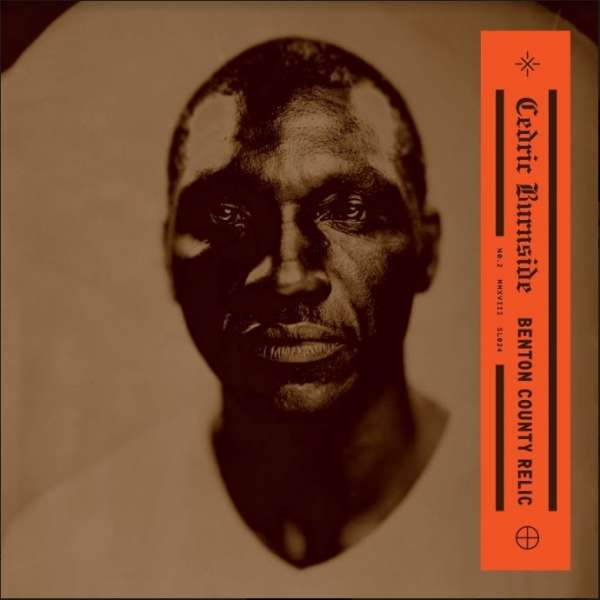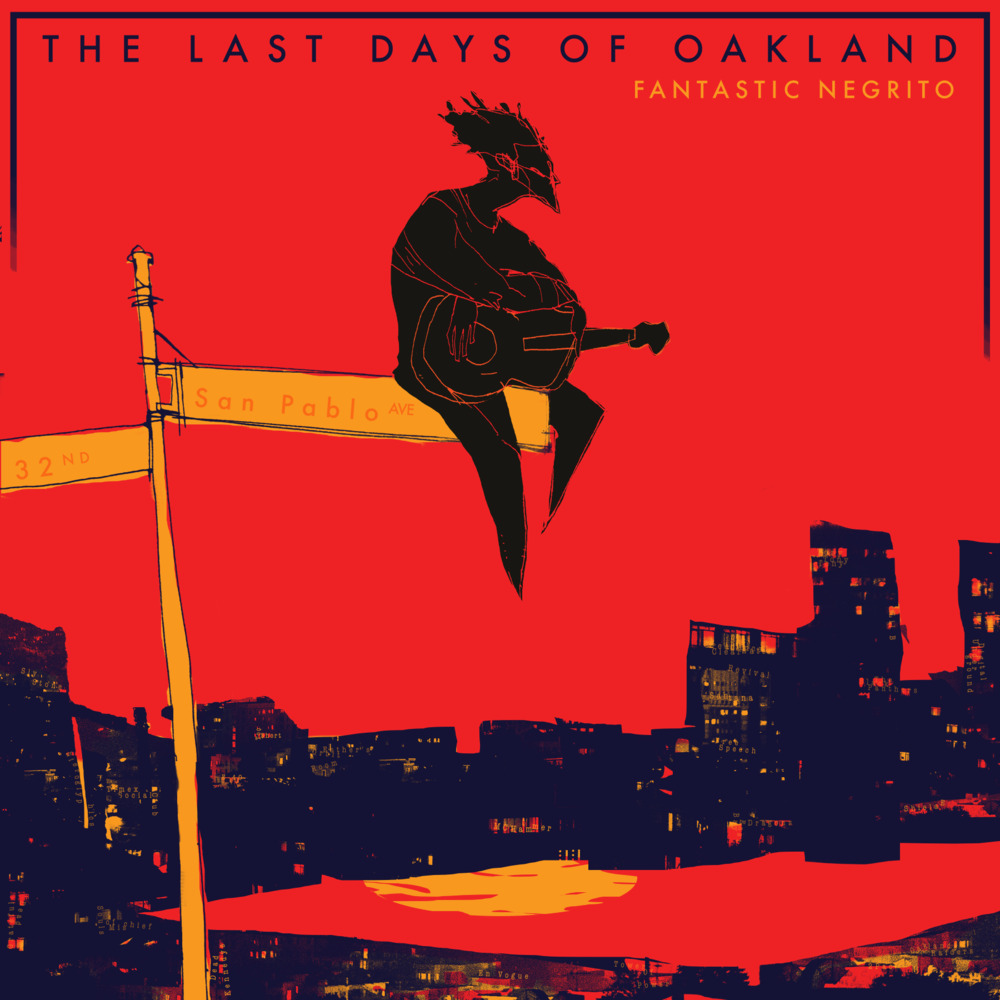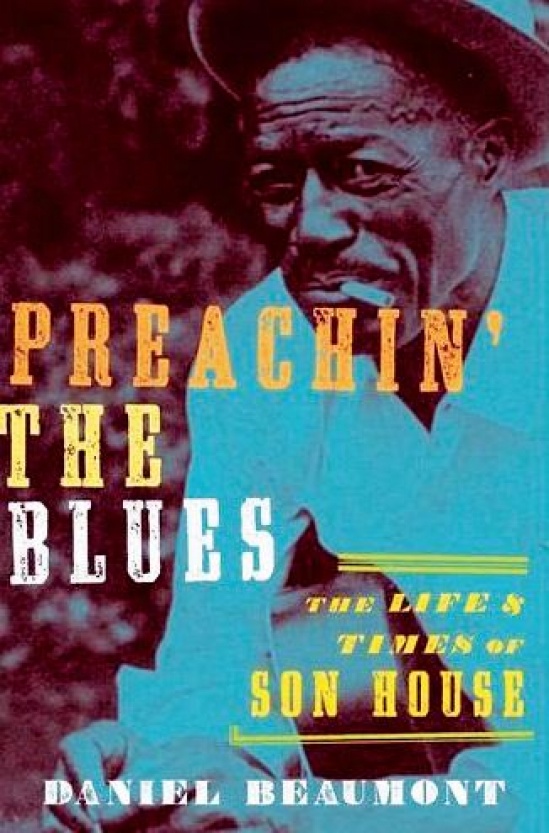Tag Archives: charlie patton
FANTASTIC NEGRITO: THE LAST DAYS OF OAKLAND
FANTASTIC NEGRITO: THE LAST DAYS OF OAKLANDÂ
LABEL: Blackball Universe
For fans of Fishbone, Tom Waits, Funkadelic, Junior Kimbrough
For those of you who believe there is no more good new music being released these days, I invite you to listen to the new album, THE LAST DAYS OF OAKLAND, from multi-instrumentalist Fantastic Negrito. Born Xavier Dphrepaulezz, and raised in a strict and religious household, the man now known as Fantastic Negrito is one of the most exciting artists to emerge from the Bay Area music scene in a long time. He moved to Oakland when he was 12 years old and immediately immersed himself in the wide variety of music styles that make up the Bay Area music scene. This explains to us why Dphrepaulezz’s own musical style really can’t be described as one genre. Elements of Funk, Soul, Gospel, Folk, and Blues make up the songs on THE LAST DAYS OF OAKLAND, and much like the city the album is named after, the music on the album is wonderful blend of styles and culture.
While this might be the first release for “Fantastic Negrito” it’s not the first release for Xavier Dphrepaulezz. In the early 90’s Dphrepaulezz was living in Los Angeles and briefly signed to Interscope Records and released one album. The album failed to satisfy the powers that be at Interscope and he was released from the label. Frustrated he actually gave up music. He then was involved in a terrible car accident which left him bedridden for several months. He returned to Oakland and several years later after the birth of his son the creative juices started to flow again and “Fantastic Negrito” was born.
The music on THE LAST DAYS OF OAKLAND takes the listener on a journey through the history of American roots music. The haunting Blues-Gospel tune “In The Pines” is a song that dates back to the late 1800’s and has been covered by everyone from Leadbelly to Nirvana. Here the song is given new life by Fantastic Negrito who recently released an accompanying video to the song that talks about the impact of gun violence in America today. Another stand-out track on the record is “Lost In The Crowd”. Originally released on his Deluxe LP in 2015 Fantastic Negrito commands your attention while he screams and shouts through this bluesy-rocker. A word also must be mentioned about the album’s cover art. The cover art features a character sitting a top a street sign that marks the location of Saint Andrews Plaza in West Oakland. Behind them is a beautiful drawing of the City of Oakland and a sunset. It might not be as important as the music on the record but the cover art truly makes this album a complete work of art. For fans who like something a little different or are fans of artists like Tom Waits, Fishbone, and Funkadelic, THE LAST DAYS OF OAKLAND is a must have.
ROBERT BELFOUR 1940-2015
Similar Artists: Junior Kimbrough, R.L. Burnside, Lightnin’ Hopkins
The Beginning: Fat Possum Records and Hill Country Blues
In 1992 a small indie label called Fat Possum Records gave the American Blues scene a much needed kick-in-the-ass when they released the debut album from 62 year-old Bluesman Junior Kimbrough. Entitled ALL NIGHT LONG, the record was met with rave reviews from both critics and Blues fans and gave Kimbrough some well deserved national attention. Shortly after the success of the Kimbrough record Fat Possum also started having success with another one of their artists, R.L. Burnside. Like Junior Kimbrough, R.L. Burnside was in his 60’s a resident of the Mississippi Hill Country and a master of a style of music called “Hill Country Blues”. Different than the well known Delta Blues style, Hill Country Blues focuses more on creating a groove and sometimes features other instruments such as Drums. With both the Kimbrough and Burnside records receiving some good press, Fat Possum began recording other Hill Country Blues musicians. Unfortunately the label quickly ran into the problem that many of the musicians they recorded were usually older and in very poor health. Sadly, many of them died before or shortly after their album got released. Down but not out Fat Possum Records kept plugging along and in 2000 they released a record by a 59 year-old construction worker named Robert Belfour.
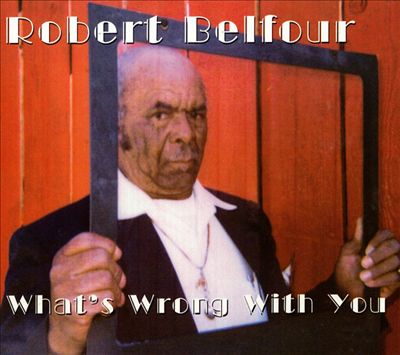 Fat Possum and Mr. Robert Belfour
Fat Possum and Mr. Robert Belfour
Robert Belfour was born in 1940 in Red Banks, Mississippi. Growing up in the Hill Country, he was surrounded by music and learned to play the guitar by watching his father play. As his interest in the guitar grew he began performing for friends and family at picnics. He continued his musical education by watching local legends like Othar Turner and Junior Kimbrough who both lived in the area and regularly performed at parties and in local Juke-Joints. Unfortunately when Robert was just 13 years old his father passed away and he was forced to get a job in order support the family. Then in 1959 Robert got married and moved to Memphis, Tennessee. He worked in construction for the next 35 years and only played music when he had time. In fact, it was until the late 80’s when he really began to take music seriously again. His first real break came in 1994 he was featured on the compilation album THE SPIRIT LIVES ON, DEEP SOUTH COUNTRY BLUES & SPIRITUALS. The recordings he contributed to the record got the attention of Fat Possum Records and in the year 2000 the label issued his debut album WHAT’S WRONG WITH YOU. A dark-acoustic record, WHAT’S WRONG WITH YOU showcased Roberts percussive guitar work and rich deep voice. The album featured a mixture of originals and covers, many of which had been made popular by other Hill Country Blues musicians. The album was a success with many Blues enthusiasts and introduced Robert to an international audience.
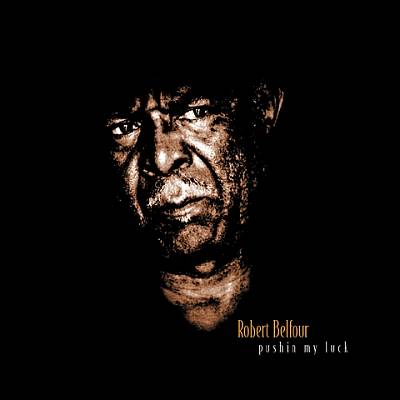 In 2003 Robert released his second album on Fat Possum, the humorously titled, PUSHIN’ MY LUCK. Like it’s predecessor, the album was primarily acoustic and pleased both fans and critics. Internationally, Robert’s popularity grew and he started to play a number of European Blues festivals. Back in the states, Robert kept his home in Memphis and continued to be a regular performer on the Juke-Joint scene in Clarksdale, Mississippi. A dynamic performer into his 70’s, Robert’s shows would usually last late into the the night and sometimes be as long as three hours! Unfortunately, all good things must come to an end. Robert Balfour passed away at his home in Memphis on February 25, 2015. Fortunately for us (and thanks to the good folks at Fat Possum Records) his recordings are still readily available and can be found on iMusic, Spotify, Amazon, and at your local record store.
In 2003 Robert released his second album on Fat Possum, the humorously titled, PUSHIN’ MY LUCK. Like it’s predecessor, the album was primarily acoustic and pleased both fans and critics. Internationally, Robert’s popularity grew and he started to play a number of European Blues festivals. Back in the states, Robert kept his home in Memphis and continued to be a regular performer on the Juke-Joint scene in Clarksdale, Mississippi. A dynamic performer into his 70’s, Robert’s shows would usually last late into the the night and sometimes be as long as three hours! Unfortunately, all good things must come to an end. Robert Balfour passed away at his home in Memphis on February 25, 2015. Fortunately for us (and thanks to the good folks at Fat Possum Records) his recordings are still readily available and can be found on iMusic, Spotify, Amazon, and at your local record store.
MAVIS STAPLES: A Tribute to a legend
Mavis Staples is a living legend. Over the past 60 years she’s not only brought Gospel music to the masses but she’s also been a voice of hope and strength for those fighting for Civil Rights. Her career started in Chicago during the late 1940’s when she and her siblings would perform in churches alongside their father, the legendary Roebuck “Pops†Staples. With a sound that was rooted in Southern Gospel and Delta Blues “The Staple Singers†soon became local favorites and in the early 50′s began recording sides for labels like VeeJay, Riverside, and Checker. In addition to gospel music fans the band was also embraced by the folk music scene during the folk revival of late 50′s and early 60′s. It was during this time that the band became very active in the civil rights movement and regularly performed at rallies and events hosted by Dr. Martin Luther King.
In the late 60′s and early 70′s the music scene was changing and the band changed right along with it. They signed with the legendary STAX Records and under the guidance of STAX A&R man Al Bell they started adopting more of a Soul-Gospel style. Their music might have become a little funkier but it still contained the same message of hope, love and compassion. Songs like “Respect Yourself“, and “I’ll Take You There†made the band a household name and catapulted them into stardom. Unfortunately, due to some questionable business decisions by Al Bell STAX Records filed for bankruptcy in 1975 and was forced to shutdown.
The Staples pressed on and over the next several years put out several releases for a variety of different labels. While they had success with their 1975 album LET’S DO IT AGAIN the group mostly was out of the spotlight until the 1990’s. During the 2000’s Mavis continued to perform and release solo albums. Paired with producers such as Ry Cooder and Wilco’s Jeff Tweedy, these records introduced Mavis to a whole new audience. In 2013 her Jeff Tweedy-produced album You Are Not Alone won a Grammy for “Best Americana Album”.
This year Mavis will turn 75 years young and she’s just as popular as ever. People all over the world still cram into venues to see her perform and she’s a regular musical guest on late-nite TV. Her music still carries with it a message of hope and tolerance. A message that reminds us that even though there have been victories in the struggle for civil rights, the fight is far from over.
STAPLE SINGERS/MAVIS STAPLES SUGGESTED LISTENING
The Staple Singers: Uncloudy Day (VeeJay)
The Staple Singers: Freedom Highway (Epic/Legacy)
The Staple Singers: Be Attitude: Respect Yourself (Stax)
The Staple Singers: The Staple Swingers (Stax)
The Staple Singers: The Best of The Staple Singers (Stax)
Mavis Staples: We’ll Never Turn Back (Anti) produced by Ry Cooder
Mavis Staples: You Are Not Alone (Anti) produced by Jeff Tweedy
Mavis Staples: One True Vine (Anti) produced by Jeff Tweedy
Preachin’ The Blues: The Life and Times of Son House
Preachin’ The Blues: The Life and Times of Son House
Written by historian Daniel Beaumont, Preachin’ The Blues: The Life and Times of Son House provides a well researched, in-depth look at the life of one of the most important figures in Blues history – Eddie “Son” House. Born in 1902 in Lyon, Mississippi, Son House grew up very involved in the church and didn’t embrace the Blues until 1927 when he heard a guitar player at a house party. Moved by the sound this guitar player was getting out of his instrument with the use of a bottleneck slide, House decided to pick up the guitar and start playing the Blues. A dynamic performer, Son House grabbed the attention of those in attendance with his larger-than-life voice and commanding guitar strumming style.  His playing inspired and help shape the playing style of both Robert Johnson and Muddy Waters in the 1930’s. Son was many things in his life – a preacher, a farmer, a husband, even a murderer. Needless to say, his complex life gave him much subject matter to sing about.
While many books on the History of the Delta Blues include information on Son House, there really hasn’t been a book that dives this deep into his individual story. One of the main reasons for this is probably because large sections of House’s life are a complete mystery. Only one copy of the first recordings Son House made for the Paramount Record label in 1930 has ever been found. Even interviews that House himself gave after being rediscovered by three college-age blues fans in the early 60’s were sometimes hard to decipher. During these interviews House would occasionally mix up dates and times from his own life. Taking all of these factors into account, it isn’t a surprise that the name Son House isn’t really know beyond serious music fans. Hopefully, this book will change that.
Essential Reading: “Delta Blues” By Ted Gioia
“Delta Blues” by Ted Gioia is by far the most comprehensive book available on the subject of the delta blues. The book starts “where the southern crosses the dog” and follows the blues all the way to Chicago and then back home to the hills of Mississippi. Â This is essential reading for blues lovers or anyone who wants to hear one of the most amazing stories in American history.

